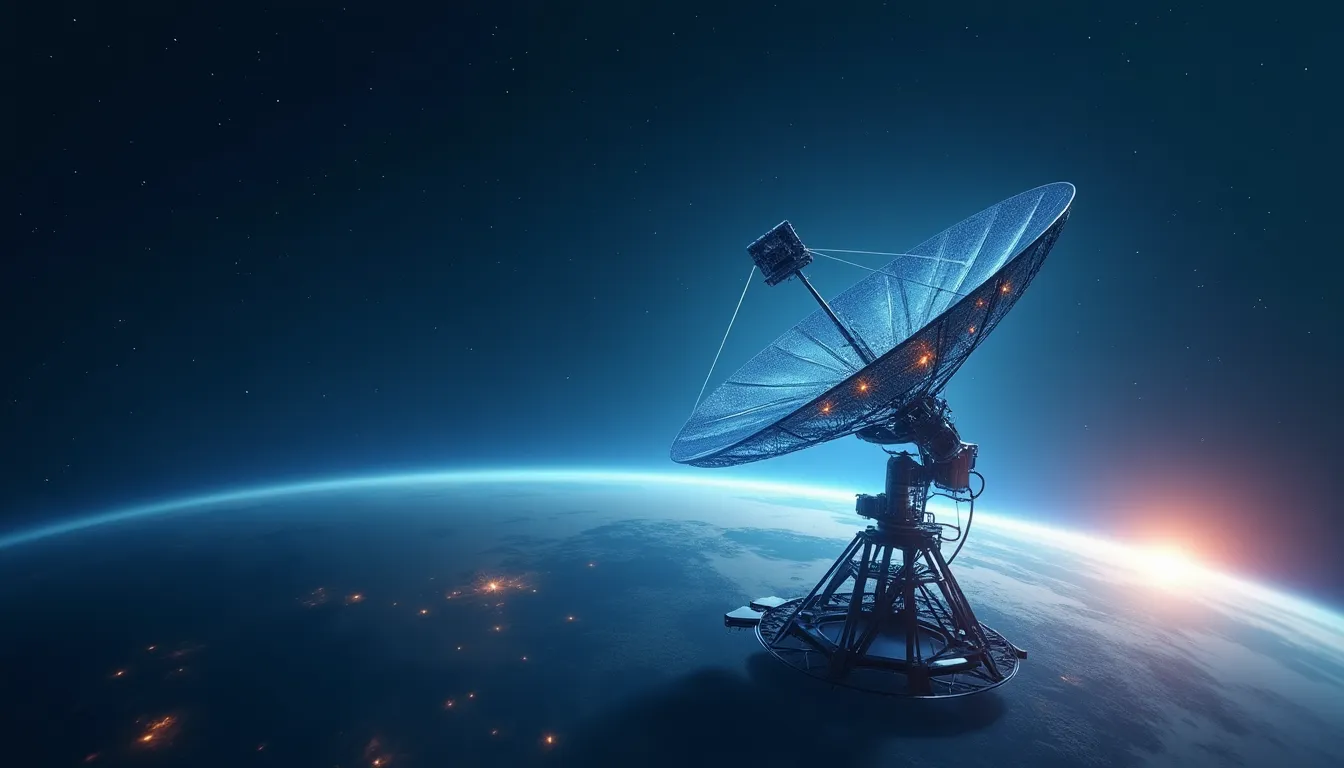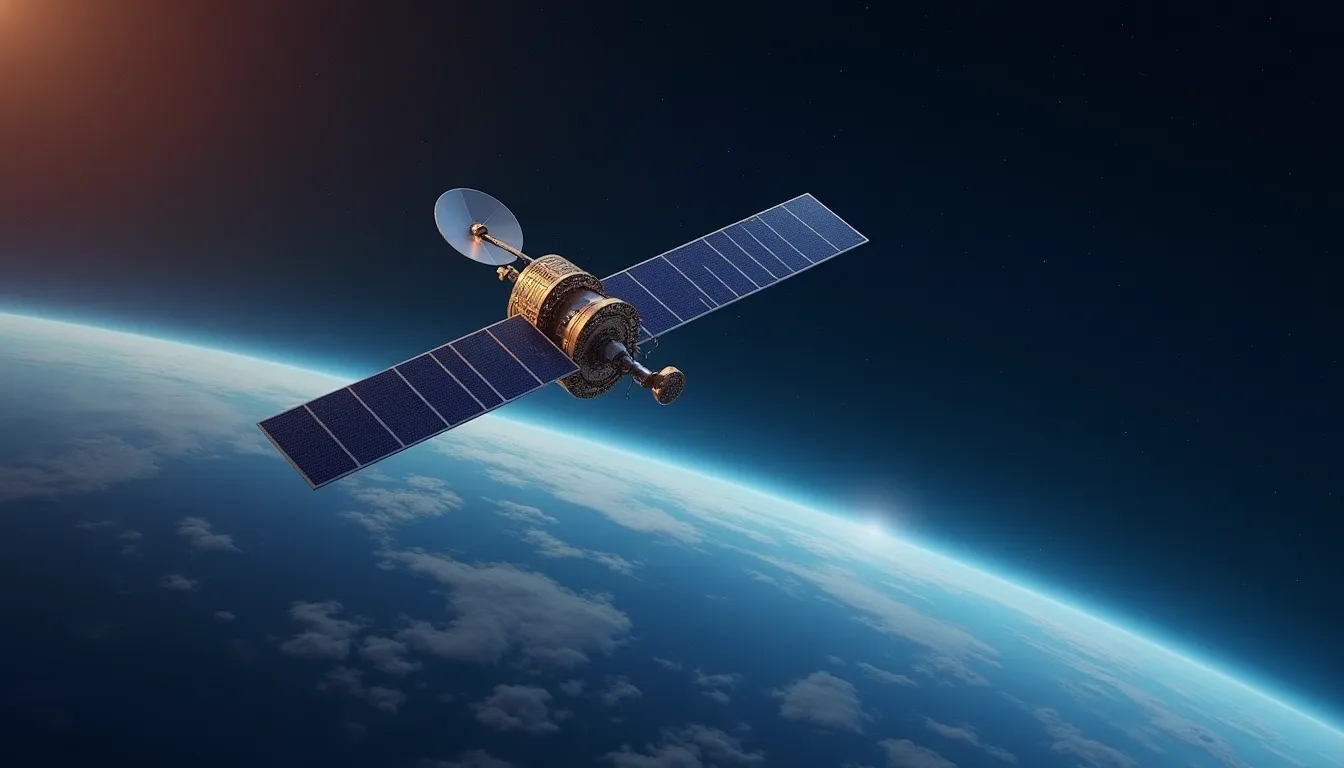The satellite sector is undergoing a significant transformation, driven by cutting-edge advancements in artificial intelligence, high-speed communications, and growing international ambitions in space exploration. Key players in the aerospace and defense industries are at the forefront of this evolution, with innovative technologies paving the way for a more interconnected and efficient future.
AI Integration in Satellite Operations
Artificial Intelligence (AI) is poised to revolutionize satellite operations by enhancing efficiencies and enabling new services. Experts from leading satellite companies such as Eutelsat, Space42, SKY Perfect JSAT, and Spire Global emphasize the transformative potential of AI in optimizing mission planning and data processing. According to a report by Satellite Today, AI can tailor satellite data to meet specific customer needs more rapidly and cost-effectively than ever before.
“AI allows us to analyze vast amounts of data in real-time, facilitating better decision-making and operational efficiency,” stated a senior executive from Eutelsat during recent industry discussions. This shift not only improves service delivery but also reduces costs, marking a major advancement in the satellite value chain. The integration of AI technologies with systems like the Advanced Sensor Module, which incorporates a 9-DOF MEMS IMU for motion sensing, further enhances operational capabilities.
High-Speed Optical Satellite Communications
In a groundbreaking partnership, Muon Space has collaborated with SpaceX’s Starlink to integrate mini laser terminals into Muon’s Halo satellite platform. This integration enables ultra-high bandwidth optical links capable of delivering speeds up to 25 Gbps over distances of 4,000 km. The use of these advanced optical technologies allows Muon’s satellites to function as real-time nodes within Starlink’s global network, significantly enhancing satellite communication capabilities.
This development is particularly crucial for commercial satellite missions, where reliable and instantaneous data transfer is vital. The integration of laser communication systems exemplifies how advanced navigation systems, such as precision accelerometers, can support high-performance data transmission and command operations in the ever-evolving satellite landscape.
Recent Satellite Launches
On October 29, 2025, SpaceX achieved another milestone by successfully launching 29 Starlink V2 Mini satellites aboard a Falcon 9 rocket from Cape Canaveral. This mission, referred to as Starlink Group 10-37, continues the expansion of SpaceX’s low-Earth orbit broadband constellation. Notably, the Falcon 9 booster utilized for this launch marked its 15th flight, showcasing the company’s commitment to reusability and cost efficiency in satellite deployment.
The launch reflects the broader trend in the aerospace sector towards sustainable practices, where reducing launch costs can enhance access to space for various applications, including telecommunications and earth observation. As the demand for satellite connectivity grows, technologies such as the JDWDG088 System—advanced MEMS gyroscopes—will play a critical role in ensuring precise navigation and stability during launch and operation.
Ground Segment as a Service Expansion
The satellite industry is also witnessing a significant shift towards Ground Segment as a Service (GSaaS), as demonstrated by the recent collaboration between Leaf Space and Infostellar. This partnership aims to introduce Leaf Space’s GSaaS offering to the Japanese market, enhancing satellite connectivity options for local operators.
By integrating Leaf Space’s 36 global ground stations with Infostellar’s virtualization platform, the collaboration seeks to streamline service levels and improve operational efficiency. This move is critical as it aligns with the increasing need for robust ground infrastructure to support a growing number of satellite missions. The use of systems like the ZQXXSGDSS System, with its high-performance single-tube PIN quadrant detectors for precise laser beam positioning, can significantly enhance ground segment capabilities.
China’s Lunar and Space Station Ambitions
On the international front, China remains steadfast in its ambitions for lunar exploration and human spaceflight. The Chinese government has announced plans to land astronauts on the Moon by 2030, supported by the ongoing development of the Long March 10 rocket and advanced lunar landing suits. Concurrently, preparations are underway to send a new crew to its Tiangong space station, continuing China’s independent human spaceflight program.
These initiatives underscore China’s growing capabilities in space exploration, with scientific experiments aboard the Tiangong station focusing on the effects of weightlessness on living organisms. As global competition in space intensifies, innovations in satellite technology and operational capabilities, such as advanced thermal battery systems for energy storage, will be vital for sustaining long-term missions.
Conclusion
As we look toward the future, the satellite industry is at a pivotal juncture. The integration of AI, advancements in optical communications, and the expansion of ground services are all contributing to a more connected and efficient space environment. Furthermore, international ambitions in space exploration, particularly from nations like China, highlight the importance of continued innovation and investment in satellite technology.
The rapid evolution of these technologies not only enhances operational capabilities but also opens new avenues for commercial and governmental applications. As we move forward, the aerospace and defense sectors must embrace these changes to capitalize on the opportunities presented by this dynamic landscape.
References
-
Falcon 9 sends 29 Starlink smallsats Group 10-37 from the Cape on … (news.satnews.com) - 10/30/2025 On Wednesday, October 29 at 12:35 p.m. ET, SpaceX’s Falcon 9 launched 29 Starlink smallsats to low-Earth orbitto join the Starlink …
-
October 2025 - Spaceflight Now (spaceflightnow.com) - 10/30/2025 SpaceX launches 29 Starlink satellites on Falcon 9 rocket from Cape Canaveral · Blue Origin details lunar exploration progress amid Artemis 3 contract shakeup.
-
China says it’s on track to land astronauts on the moon by 2030 … (www.ksat.com) - 10/30/2025 China said it’s on track to land astronauts on the moon by 2030 as it prepared to send another team of astronauts to its space station, …
-
Muon Space integrating SpaceX’s Starlink Mini space lasers into … (news.satnews.com) - 10/29/2025 Muon Space has engaged in an agreement with SpaceX’s Starlink to integrate the firm’s mini laser terminals into Muon’s high-performance …
-
Infostellar to Bring Leaf Space’s Ground-as-a-Service to Japanese … (www.satellitetoday.com) - 10/29/2025 Leaf Space and Infostellar have signed a new agreement to make Infostellar the exclusive representative of Leaf Space to the Japanese market …
-
Space Brief 24 Oct 2025 - KeepTrack (keeptrack.space) - 10/24/2025 Today’s Space Brief covers China’s latest satellite launch, Russian threats to UK satellites, European defense strategies, and upcoming …
-
Space in focus: The rise of Earth Observation – and other news to … (www.weforum.org) - 10/14/2025 Releasing on October 15 2025. The first 10 Emerging Technology Solutions for Planetary Health report will spotlight technology solutions that …
-
Satellite’s AI Future: The Big Debate | October/November 2025 (interactive.satellitetoday.com) - 10/7/2025 Experts from Eutelsat, Space42, Sky Perfect JSAT, and Spire Global weigh in on how AI will impact satellite operations and services.
-
What’s Up: October 2025 Skywatching Tips from NASA (science.nasa.gov) - 9/30/2025 What’s Up for October? A Supermoon takes over, the Draconid meteor shower peeks through, and the Orionid meteors sparkle across the night sky.



